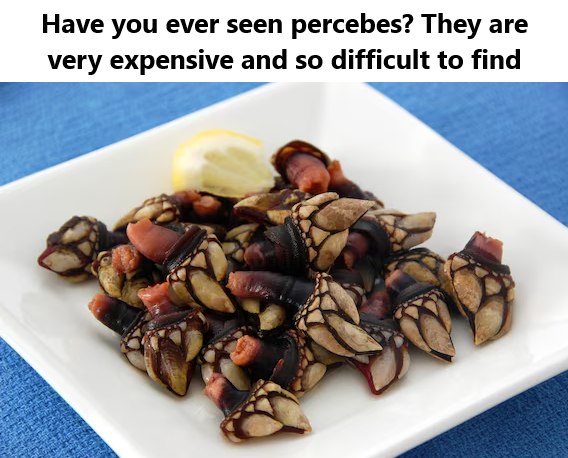ADVERTISEMENT
At first glance, percebes might not seem appetizing, and their unusual appearance may not immediately tempt you to try them. However, these crustaceans are highly prized and extremely hard to find due to their unique habitat—clinging to rocks battered by the powerful waves of the Atlantic Ocean. Harvesting them can be a dangerous task.
Percebes look like something out of a Jurassic Park movie. Their appearance is not exactly inviting, and if you don’t know what they are, their strange look probably wouldn’t even catch your attention. But looks can be deceiving, and that rule definitely applies to percebes—an expensive delicacy that thrives on the rugged Atlantic coasts of Spain, Portugal, and Morocco, where some of the world’s highest waves crash against rocks.
Most people are unfamiliar with the name percebes, and these barnacle-like crustaceans are far less known than other seafood varieties. Their odd appearance might discourage further interest, but percebes are rarely seen outside the regions where they are harvested, primarily because they must be sold alive to retain their flavor.
This delicacy is most commonly found in Galicia, but also along Spain’s northern coast, particularly in the Basque Country, as well as in Portugal and Morocco. Percebeiros (percebes harvesters) brave the Atlantic’s waves to collect these crustaceans. They live attached to rocks, safe from predators like fish and birds. Among the rocks, percebes filter plankton from the sea, which sustains them.
Why Are Percebes So Expensive?
Their dangerous and difficult harvesting process is what makes percebes so expensive. Percebeiros must risk their lives, navigating treacherous rocks and violent waves to pry the crustaceans from the rock with a knife. Maintaining balance amid the waves requires a mix of skill and courage. This dangerous labor contributes to the high price of percebes, which can cost up to 100 euros per kilogram.
The dangers are real: in the past, some percebeiros have tragically lost their lives during harvest.
How Are Percebes Prepared and Eaten?
see continuation on next page
ADVERTISEMENT
